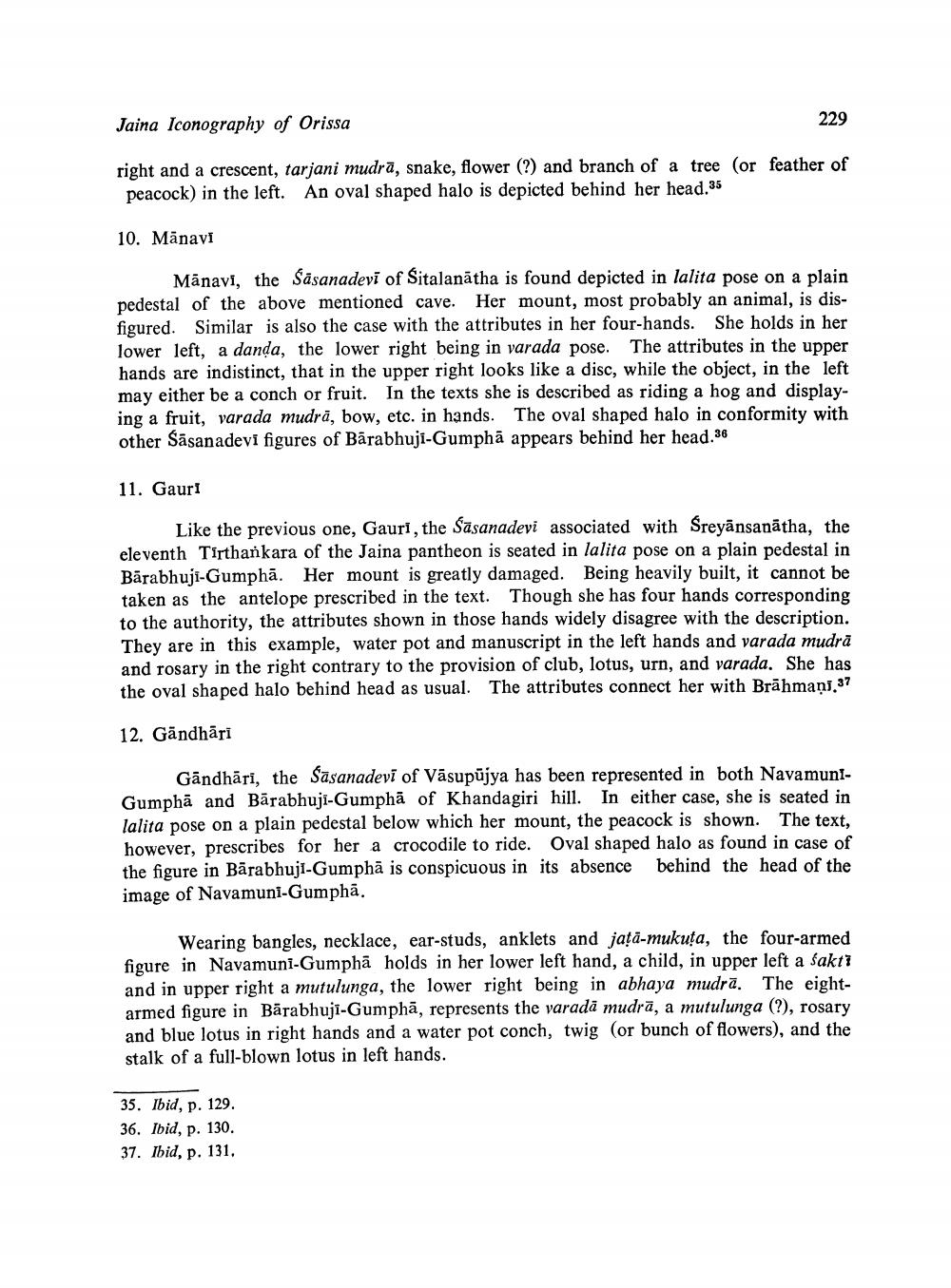________________
Jaina Iconography of Orissa
229
right and a crescent, tarjani mudrā, snake, flower (?) and branch of a tree (or feather of peacock) in the left. An oval shaped halo is depicted behind her head.35
10. Mānavi
Mānavi, the Sāsanadevī of Sitalanātha is found depicted in lalita pose on a plain pedestal of the above mentioned cave. Her mount, most probably an animal, is disfigured. Similar is also the case with the attributes in her four-hands. She holds in her lower left, a danda, the lower right being in varada pose. The attributes in the upper hands are indistinct, that in the upper right looks like a disc, while the object, in the left may either be a conch or fruit. In the texts she is described as riding a hog and displaying a fruit, varada mudrā, bow, etc. in hands. The oval shaped halo in conformity with other Sāsanadevi figures of Bārabhuji-Gumphā appears behind her head.36
11. Gauri
Like the previous one, Gauri, the Sāsanadevi associated with Sreyānsanātha, the eleventh Tirthankara of the Jaina pantheon is seated in lalita pose on a plain pedestal in Bārabhuji-Gumphā. Her mount is greatly damaged. Being heavily built, it cannot be taken as the antelope prescribed in the text. Though she has four hands corresponding to the authority, the attributes shown in those hands widely disagree with the description. They are in this example, water pot and manuscript in the left hands and varada mudrā and rosary in the right contrary to the provision of club, lotus, urn, and varada. She has the oval shaped halo behind head as usual. The attributes connect her with Brāhmaṇī,37
12. Gāndhāri
Gāndhārī, the Sāsanadevī of Vāsupūjya has been represented in both NavamuniGumph, and Bārabhuji-Gumphā of Khandagiri hill. In either case, she is seated in lalita pose on a plain pedestal below which her mount, the peacock is shown. The text, however, prescribes for her a crocodile to ride. Oval shaped halo as found in case of the figure in Bārabhuji-Gumphā is conspicuous in its absence behind the head of the image of Navamuni-Gumphā.
Wearing bangles, necklace, ear-studs, anklets and jațā-mukuta, the four-armed figure in Navamuni-Gumphā holds in her lower left hand, a child, in upper left a sakti and in upper right a mutulunga, the lower right being in abhaya mudrā. The eightarmed figure in Bārabhuji-Gumphā, represents the varada mudrā, a mutulunga (?), rosary and blue lotus in right hands and a water pot conch, twig (or bunch of flowers), and the stalk of a full-blown lotus in left hands.
35. Ibid, p. 129. 36. Ibid, p. 130. 37. Ibid, p. 131.




